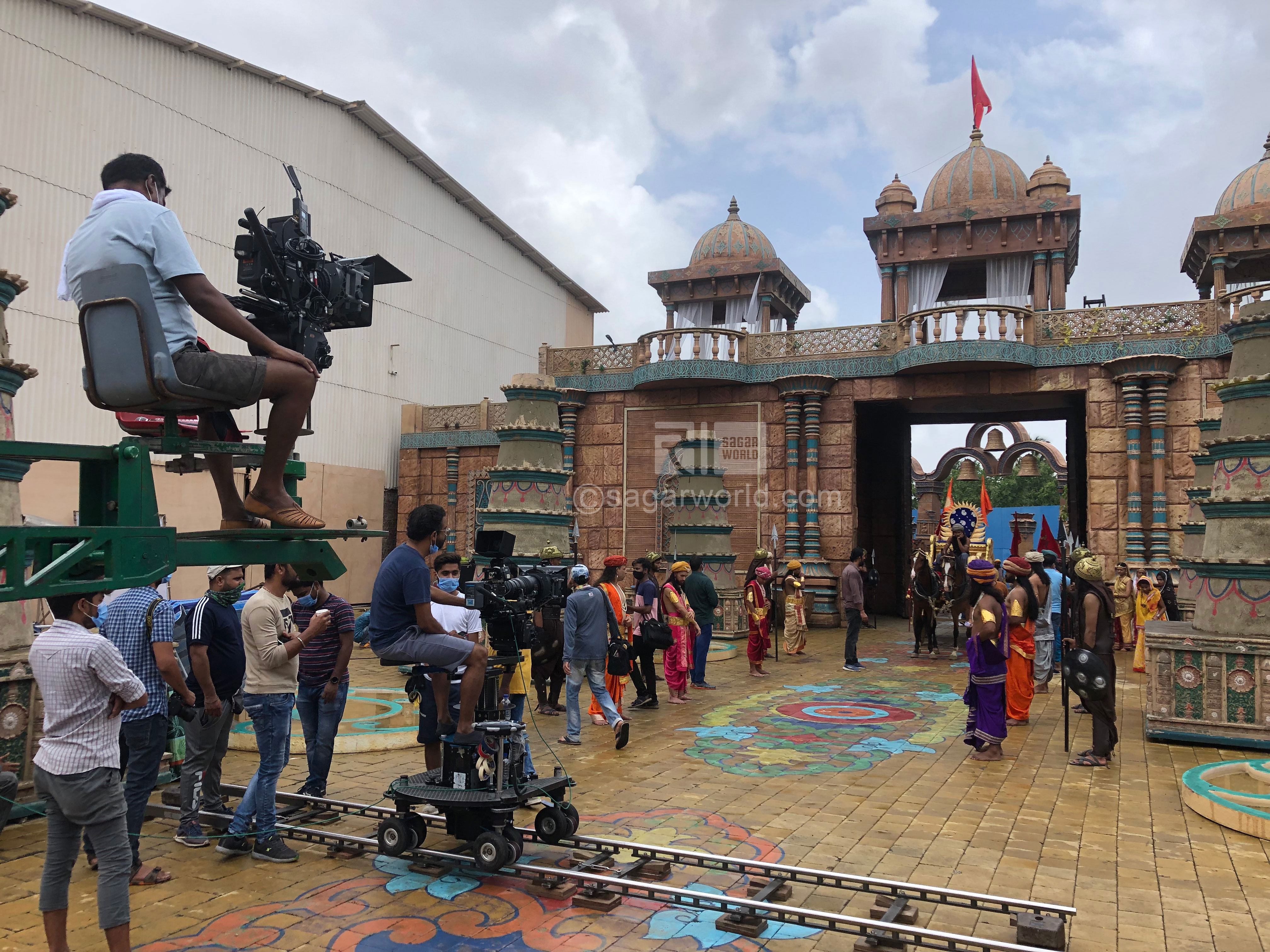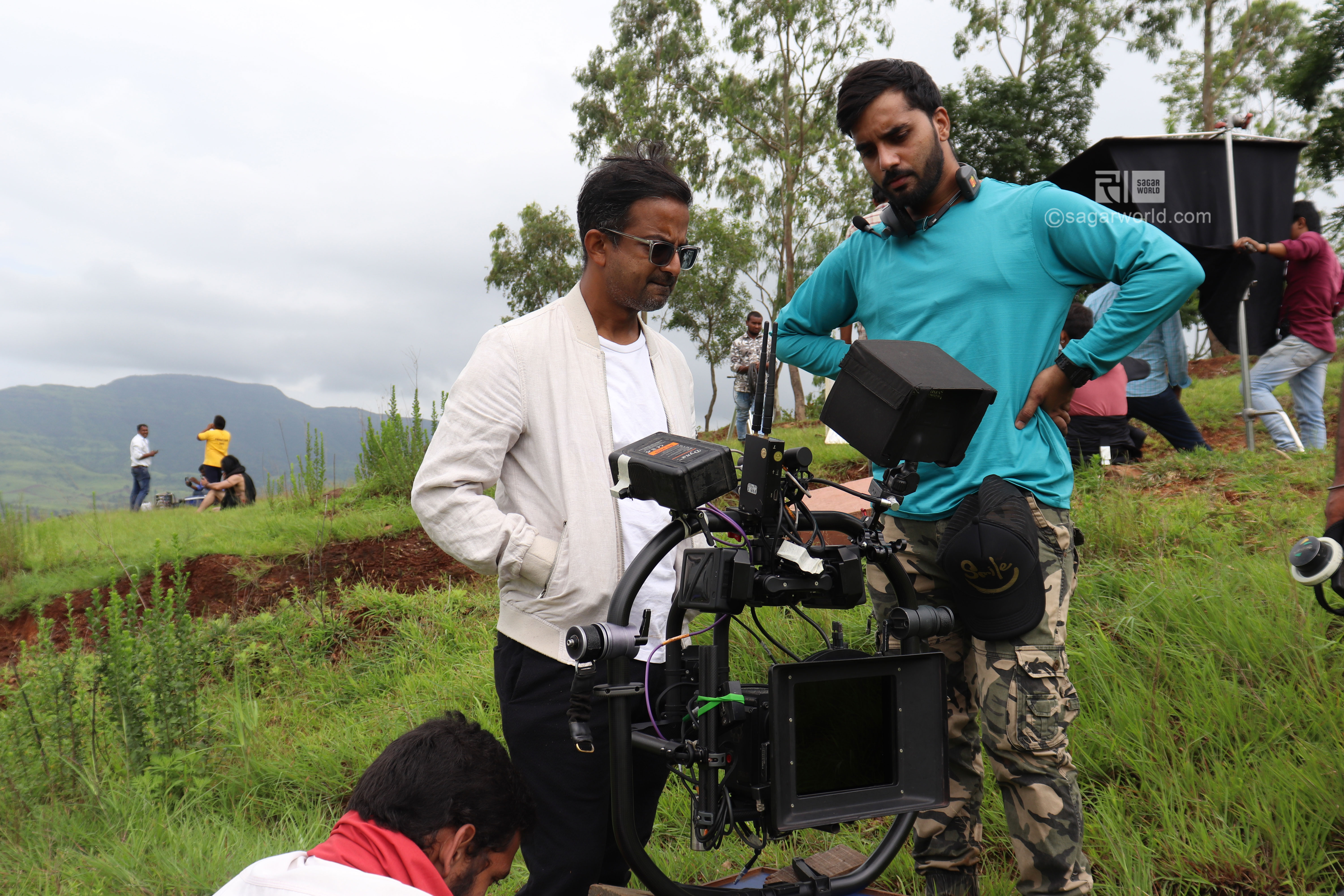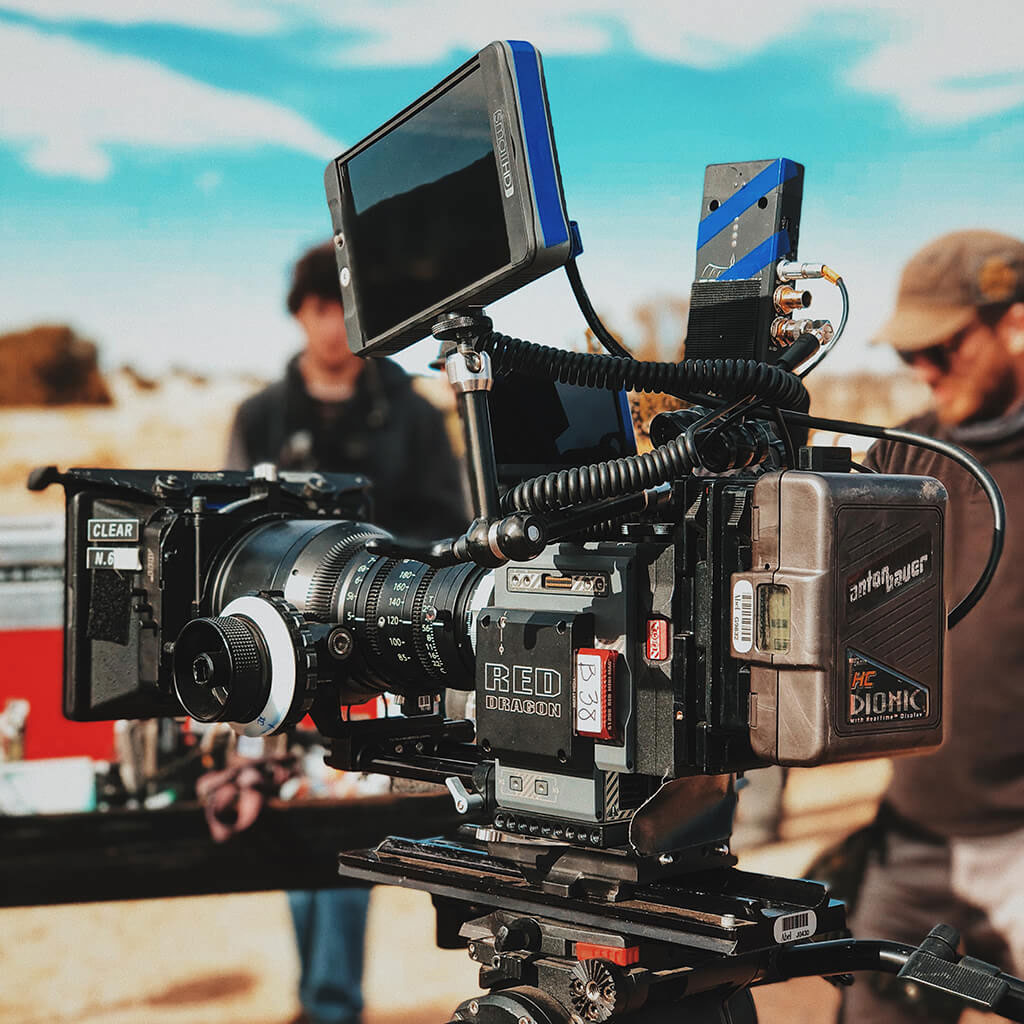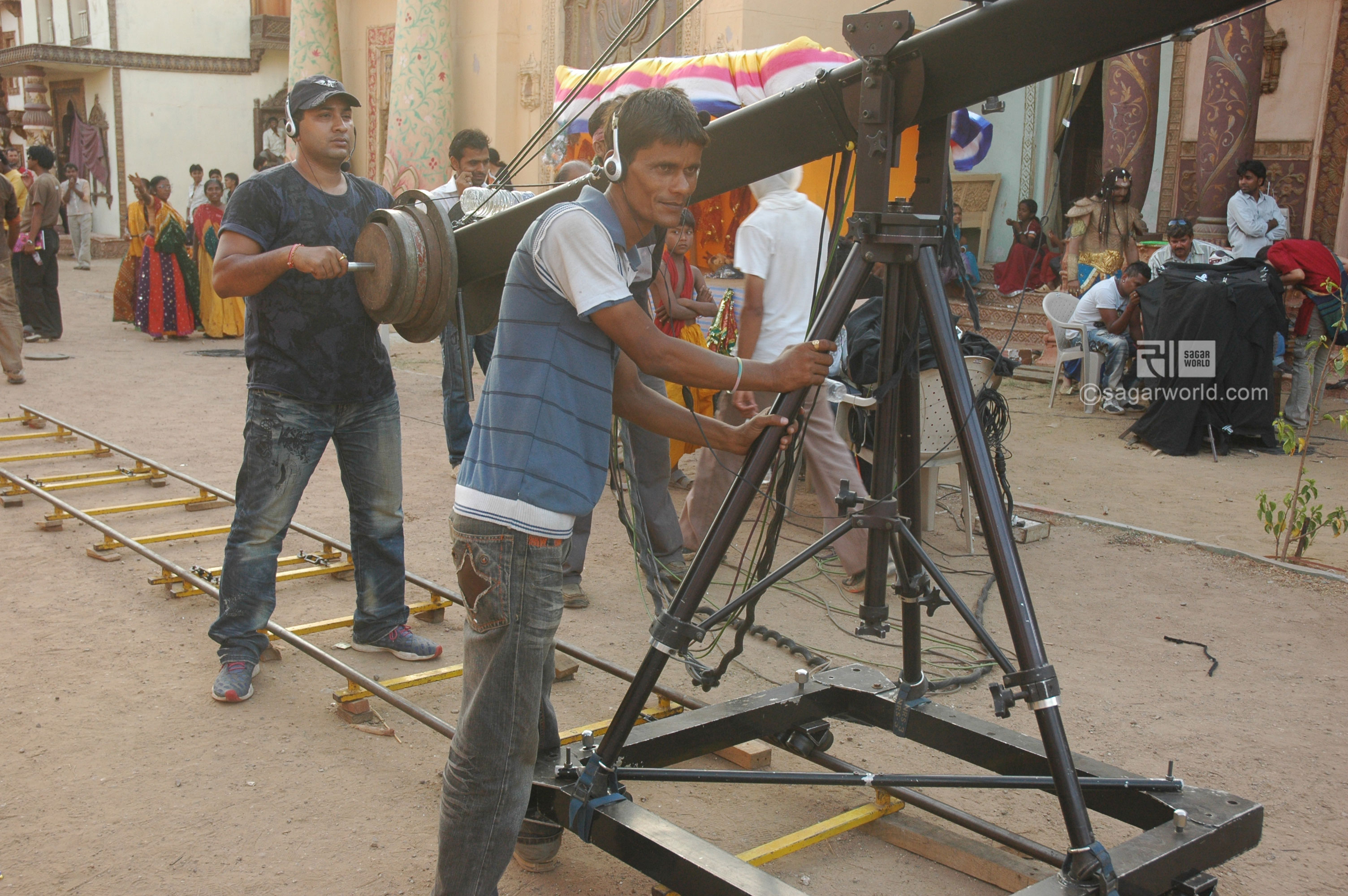FILMING - Most of the proportion of production
The director comes to the seat, and according to the schedule, scenes are shot in shifts with
a mutual coordination of various technical teams. On location, director sits on the monitor
and stages the scene according to the screenplay and how he wants the scene to be shot.
Where the director’s team is responsible for easy flow of every small sector, the light team
subordinates with the camera team, having the cinematographer on the camera to create a
perfect shot. However, what brings the shot to life is an abstract feeling - A bonhomie
between the director and the DOP; a chemistry that ensures a smooth shoot.


Generally, movies are shot on one camera or two camera setups through industry standard
1080p or 4k resolution cameras such as Arri Alexa, Blackmagic Design Cinema Camera,
Canon Cinema EOS, etc. However, TV serials are shot in multiple camera setup with major
focus on tight shots or close ups due to the TV format, which basically is a close up medium
since people watch it in their homes on small screens. Since in India, the women audience
on television is huge (A reason behind rise in the daily soaps), thus elevating emotional
quotient, this format works as a favour. And because of the presence of HD resolution in
modern TV sets, shows are shot majorly on cameras such as Sony's high-end 4K, F5 etc.


Basically, according to the scene division and story board, each frame is shot with external
association to the VFX teams, as green screen or blue screen shots are a major in
mythological shows and the light team that ensures proper blacking and diffusion of light; it
is very necessary to get the right colour temperature, especially in TV shows because of the
use of saturated colours in final product. Normally, to get an ease in shoot, matte paintings
are made beforehand digitally and are then used to set lights accordingly. However, there
are many other factors that influence light placements in a frame; Props, set extensions,
light direction and shadow in VFX shots accompany light effects under acknowledged
supervision and coordination with all the departments.
However, this is just the visual aid. Sync sound is generally used for efficient working and
use of RODE mics are used to record the dialogues of the actors on set. However, dubbing
still takes place in post-production as there is a lot of sound from the set that also gets
recorded. Thus, once every sector works together on a shot according to the director’s
choice and pre-production standard, a shot is finalized.
And this is how the whole screenplay is justified, and the shoot is completed in scheduled time.